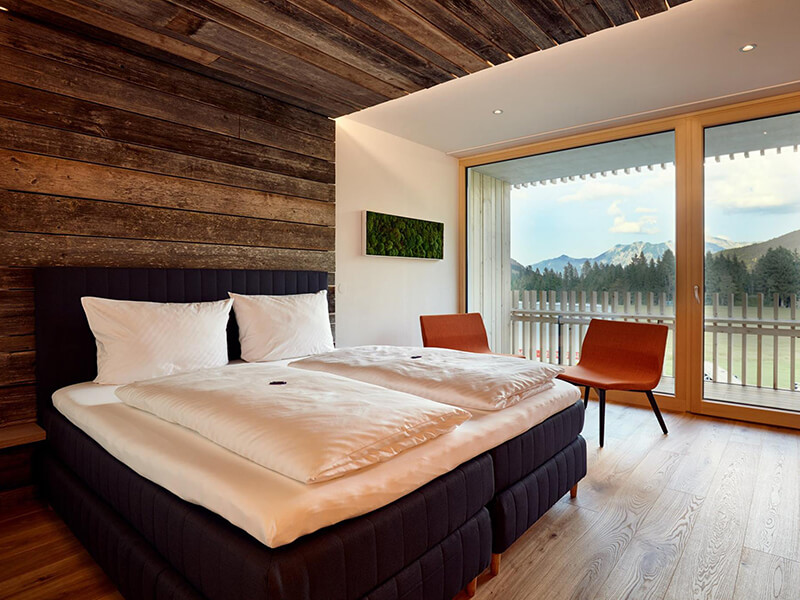Who does not know this? You get to a hotel room and it’s either too hot, too cold, or/and it has very bad air!
The climate in hotel rooms is a real challenge that is very difficult to master – at least with conventional means such as radiators, underfloor heating or air conditioning.
The Genuss- und Aktivhotel Sonnenburg in Riezlern in Kleinwalsertal has accepted the challenge and has equipped their new rooms with surface tempering and partly clay plaster, with sensational feel-good climate result.
What is the advantage of surface temperature control compared to conventional heating/air conditioning?
The conventional heater has the task of regulating the air temperature in the room. For this purpose, the heating system must have a much higher temperature than the air temperature to be reached (radiators 45 – 60 °C, floor heating with 28 – 40 °C).
Getting a handle on the climatic requirements of a hotel room via the air temperature is a very difficult undertaking. The usually extremely unsatisfactory result is finally regulated by the guest, via opening the window. For the hoteliers, this means a considerable energy expenditure.
A surface temperature control, on the other hand, regulates the guest’s perception of warmth with the temperatures of the surrounding surfaces via radiant heat exchange. The very low temperatures required for this (23 – 26 °C) are similar to the air temperature, which, however, plays a very subordinate role.
The low surface temperatures of the tempered surfaces are adapted to the human sensation of warmth and thus ensure a permanently comfortable feeling of warmth (for more information on the system, see egger-Wohlfühl-Klima).
Since radiant heat does not require the air to be heated first, but heats the surrounding surfaces to a very low level, this is a solution with a very fast response time. The running energy costs are also about half than other solutions.



 Wir sind Annette & Christian Egger. Hier im Blog erklären wir Ihnen, worauf es beim Wohlfühl-Klima ankommt. Wir behandeln hier Themen wie Energie-Sparen beim Heizen & Kühlen und zeigen Ihnen unsere interessantesten Projekte.
Wir sind Annette & Christian Egger. Hier im Blog erklären wir Ihnen, worauf es beim Wohlfühl-Klima ankommt. Wir behandeln hier Themen wie Energie-Sparen beim Heizen & Kühlen und zeigen Ihnen unsere interessantesten Projekte. 